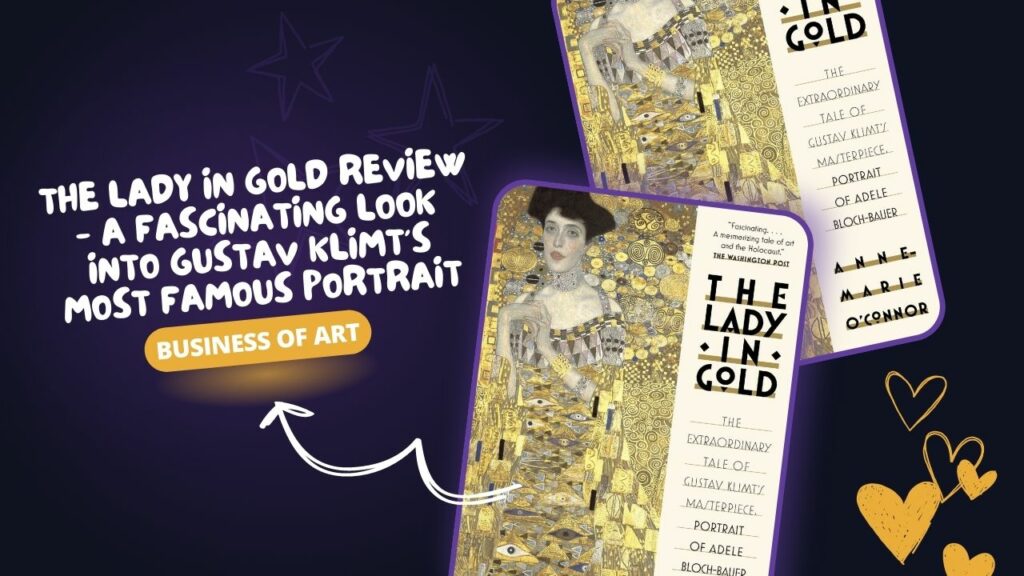eBook This – The Lady in Gold by Anne-Marie O’Connor is a non-fiction book that takes readers on a journey through the creation, theft, and eventual recovery of Gustav Klimt’s iconic portrait, “Portrait of Adele Bloch-Bauer I.”
The book is well researched and provides a wealth of information about the historical, cultural, and political context in which the painting was created.
Through interviews with descendants of Adele Bloch-Bauer and those who worked to recover the painting, readers are given an inside look at the legal battles and the personal struggles surrounding the ownership of this masterpiece.
Personal Opinion
I was thoroughly impressed with “The Lady in Gold.” O’Connor’s writing is engaging and her research is meticulous.
The book provides a fascinating look into the world of art and the often-complicated relationship between art, money, and politics.
The story of Adele Bloch-Bauer and her portrait is both captivating and thought-provoking, making this book a must-read for anyone interested in art history or the intersection of politics and culture.
Strengths
One of the greatest strengths of “The Lady in Gold” is O’Connor’s ability to bring to life the historical context in which the painting was created.
She provides an in-depth look at the artistic movements of the time, the political climate, and the societal norms that influenced Klimt’s work.
Additionally, O’Connor’s writing is engaging and accessible, making it easy for readers to understand the complex legal and political battles surrounding the ownership of the painting.
Weaknesses
While “The Lady in Gold” provides a wealth of information, some may find the amount of detail overwhelming.
Additionally, the book focuses primarily on the history and politics surrounding the painting, and may not appeal to those who are primarily interested in the art itself.
Who to Recommend the Book To
“The Lady in Gold” is a must-read for anyone interested in art history or the intersection of politics and culture.
It is also a great choice for those who enjoy well-researched non-fiction that provides a detailed look into a specific event or time period.
Additionally, this book would be a great choice for anyone looking to gain a deeper understanding of Gustav Klimt and the art of the Vienna Secession.
Overall, “The Lady in Gold” is a well-written, informative, and engaging book that provides a unique look into the world of art and the often-complicated relationships surrounding it.
About the Author
Anne-Marie O’Connor is a journalist and author based in Los Angeles.
She has written for several major newspapers and magazines, including The Washington Post and The Los Angeles Times.
The Lady in Gold is her first book. She has a deep interest in the intersection of art, history, and politics, and her writing reflects this.
O’Connor has a keen eye for detail and a clear, engaging writing style that brings complex stories to life.
She is an expert in her field and is known for her ability to craft compelling, thought-provoking narratives.
Pros and Cons of The Lady in Gold by Anne-Marie O’Connor:
Pros
- Engaging Writing Style: Anne-Marie O’Connor is a skilled writer and her writing style is engaging and easy to follow. This makes the book a quick and enjoyable read.
- Well-Researched: The Lady in Gold is a well-researched book that draws on a wide range of sources to tell its story. This makes the book a reliable source of information for those interested in the subject matter.
- Fascinating History: The book tells the story of the portrait of Adele Bloch-Bauer, a famous artwork by Gustav Klimt, and the legal battle to reclaim it by her family. This is a fascinating and complex story that is sure to captivate readers.
Cons
- Lack of Personal Touch: Although the writing style is engaging, the book can feel a bit impersonal at times. This is because the author focuses mainly on the facts and events surrounding the portrait, rather than the emotions and motivations of the people involved.
- Over-Reliance on Secondary Sources: The book relies heavily on secondary sources such as news articles and court transcripts. While this provides a wealth of information, it can also lead to a lack of depth in certain areas.
- Narrow Focus: The book focuses mainly on the portrait of Adele Bloch-Bauer and the legal battle to reclaim it. While this is a fascinating story, readers may be disappointed if they are looking for a broader examination of the art world or Austrian culture.







